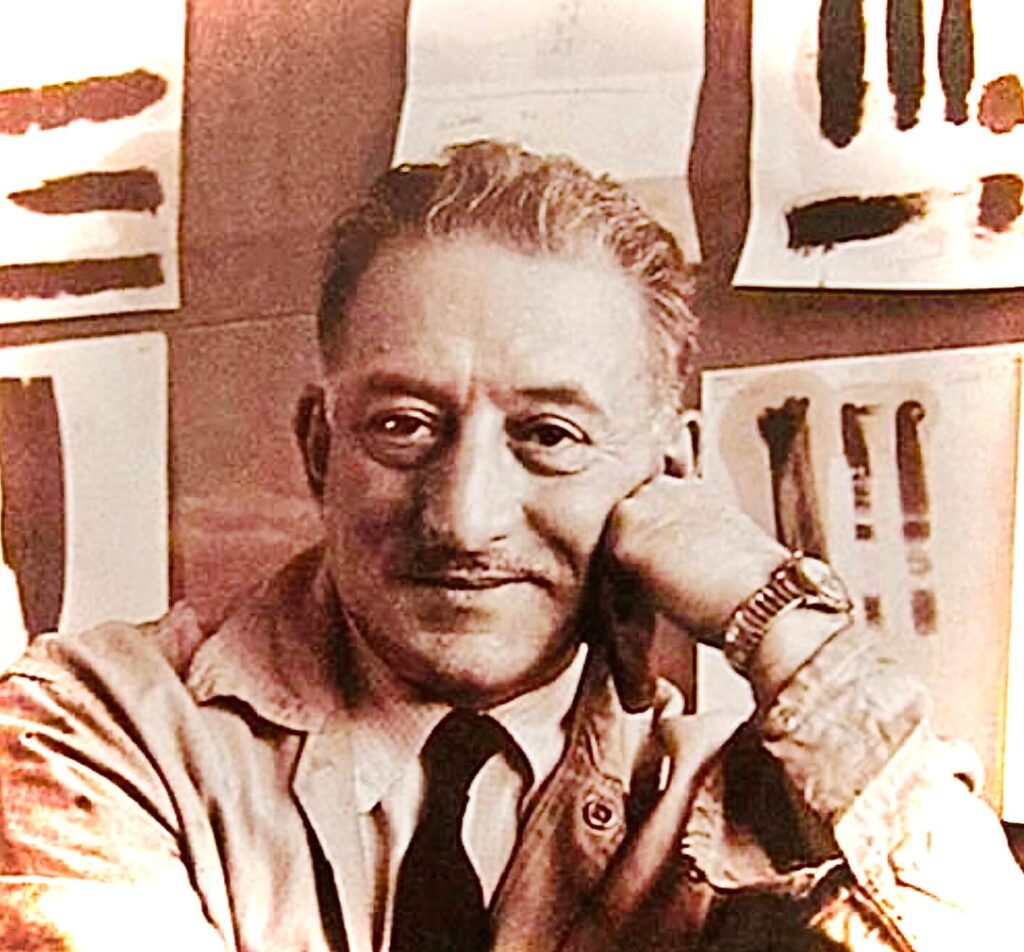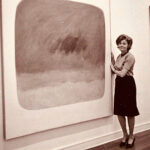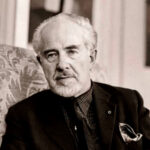Adolph Gottlieb
Adolph Gottlieb, a pioneering figure in Abstract Expressionism, is renowned for his innovative use of symbols and color fields. His art explored the depths of human emotion and the subconscious, making significant contributions to the evolution of modern art. This article delves into his life, artistic journey, and highlights three of his most notable works.

Early Life and Education
Adolph Gottlieb was born on March 14, 1903, in New York City. From an early age, he displayed a keen interest in art, which led him to pursue formal education in the field. He studied at the Art Students League of New York and later traveled to Europe, where he immersed himself in the art and culture of Paris, Berlin, and Munich. This exposure to European modernism had a profound impact on his artistic development.
Upon returning to New York, Gottlieb became part of the burgeoning modern art scene, establishing relationships with other future Abstract Expressionists, including Mark Rothko and Barnett Newman. He was also an active member of the Ten, a group of artists dedicated to advancing modern art in America.
Artistic Evolution and Style
Gottlieb’s early works were influenced by Surrealism and European modernism, evident in his use of biomorphic forms and dreamlike imagery. However, as he matured as an artist, he began to develop a unique visual language that would define his career. His work evolved from representational art to pure abstraction, focusing on the expressive potential of color and form.
One of Gottlieb’s significant contributions to Abstract Expressionism was his development of the “Pictograph” series in the 1940s. These paintings featured grids of symbols and abstract forms, reminiscent of ancient hieroglyphs or tribal art. The Pictographs represented a synthesis of modernist abstraction and primal symbolism, reflecting Gottlieb’s interest in the universal language of symbols.
Notable Works
1. “Blast I” (1957)
“Blast I” is one of Gottlieb’s most famous works and a prime example of his mature style. The painting features a dynamic composition with a central burst of color, resembling an explosion or cosmic event. The bold use of reds, yellows, and blacks creates a sense of movement and intensity, capturing the viewer’s attention.
This work is part of Gottlieb’s “Burst” series, which he began in the mid-1950s. The series is characterized by its explosive imagery and use of vivid colors, symbolizing the raw energy and chaos of the universe. “Blast I” exemplifies Gottlieb’s ability to convey powerful emotions through abstract forms and his mastery of color dynamics.
2. “Frozen Sounds, Number 1” (1951)
“Frozen Sounds, Number 1” is another significant work that showcases Gottlieb’s exploration of the subconscious mind. The painting features a grid of abstract forms and symbols, rendered in muted tones of blue, green, and brown. The composition is both enigmatic and evocative, inviting viewers to interpret its meaning through their own experiences.
This work reflects Gottlieb’s interest in the psychological aspects of art and his belief in the power of symbols to convey complex emotions. The use of a grid structure creates a sense of order and balance, while the abstract forms within the grid evoke a sense of mystery and depth. “Frozen Sounds, Number 1” is a testament to Gottlieb’s ability to blend structure and spontaneity in his work.
3. “Orb” (1964)
“Orb” is a later work that highlights Gottlieb’s continued evolution as an artist. The painting features a large, circular form floating against a field of deep blue, surrounded by smaller, irregular shapes. The central orb radiates a sense of calm and serenity, contrasting with the dynamic movement of the surrounding forms.
This work is part of Gottlieb’s “Imaginary Landscapes” series, which he began in the 1960s. The series reflects his fascination with the natural world and the cosmos, exploring themes of space and time. “Orb” exemplifies Gottlieb’s ability to create a sense of depth and dimensionality through the use of color and form, capturing the viewer’s imagination.
Techniques and Innovations
Gottlieb’s approach to painting was marked by his innovative use of symbols and color fields. He often employed a limited palette, focusing on the interplay of contrasting colors to create a sense of tension and balance. His use of symbols and abstract forms was deeply influenced by his interest in psychology and the subconscious mind, as well as his fascination with ancient and tribal art.
One of Gottlieb’s key innovations was his development of the “Burst” series, which represented a significant departure from his earlier work. The series was characterized by its dynamic compositions and bold use of color, reflecting Gottlieb’s interest in the raw energy and chaos of the universe. The “Burst” series was a major influence on subsequent generations of artists, paving the way for the development of Color Field painting and other forms of abstract expression.
Personal Life and Influence
Gottlieb’s personal life was marked by his dedication to his art and his commitment to advancing modern art in America. He was a founding member of the New York School, a group of artists that included Jackson Pollock, Willem de Kooning, and Mark Rothko. The group was instrumental in establishing Abstract Expressionism as a major movement in postwar American art.
Despite facing financial difficulties and critical resistance early in his career, Gottlieb persevered and eventually gained recognition for his contributions to modern art. His work was featured in major exhibitions and collections around the world, including the Museum of Modern Art in New York and the Tate Modern in London.
Gottlieb’s influence on subsequent generations of artists is profound. His innovative use of symbols and color fields, as well as his exploration of the subconscious mind, paved the way for the development of new forms of abstract expression. His work continues to inspire and challenge artists and viewers alike, reflecting his enduring legacy in the world of modern art.
Recognition and Legacy
Adolph Gottlieb’s contributions to Abstract Expressionism and modern art are widely recognized and celebrated. His works are held in major museums and collections around the world, including the Museum of Modern Art in New York, the San Francisco Museum of Modern Art, and the Whitney Museum of American Art. His influence can be seen in the work of subsequent generations of artists who continue to explore the possibilities of abstraction and emotional expression.
In 1963, Gottlieb was awarded the Grand Prize at the São Paulo Biennial, one of the most prestigious awards in the art world. This recognition helped to cement his reputation as a leading figure in Abstract Expressionism and brought his work to an international audience.
In 1976, the Adolph and Esther Gottlieb Foundation was established to support the work of individual artists. The foundation continues to provide grants and fellowships to artists, reflecting Gottlieb’s commitment to fostering creativity and innovation in the arts.
Conclusion
Adolph Gottlieb was a pioneering figure in Abstract Expressionism, whose innovative use of symbols and color fields left a lasting impact on modern art. Through his most notable works, such as “Blast I,” “Frozen Sounds, Number 1,” and “Orb,” Gottlieb explored the depths of human emotion and the subconscious, creating powerful and evocative compositions that continue to inspire and challenge viewers. His legacy as a master of abstract expression endures, leaving an indelible mark on the art world.



